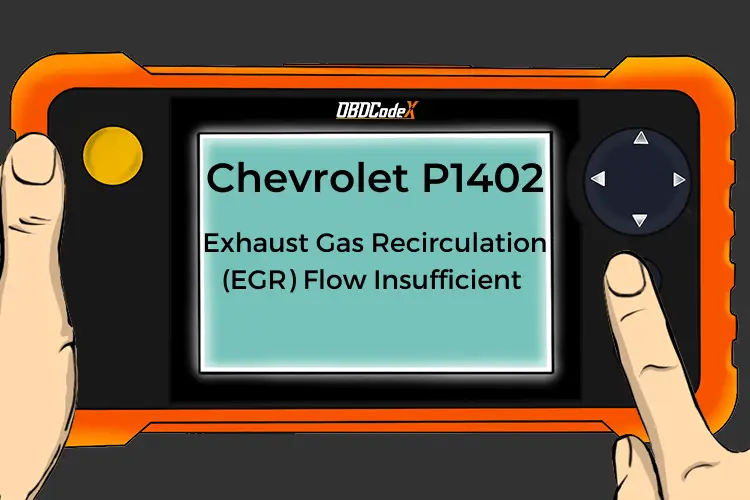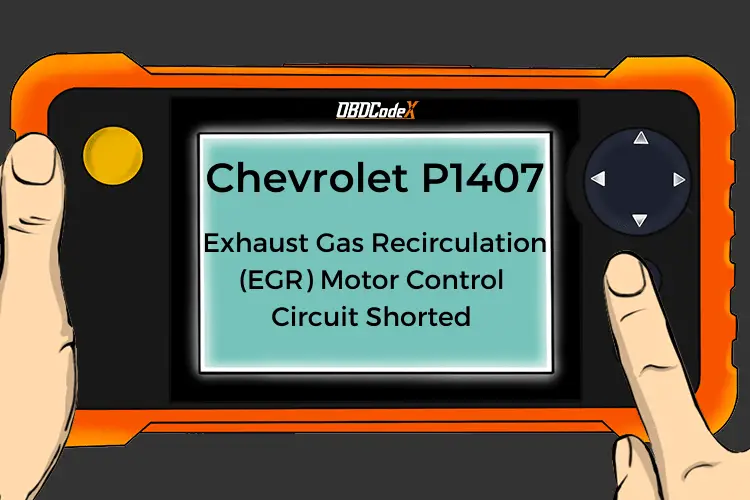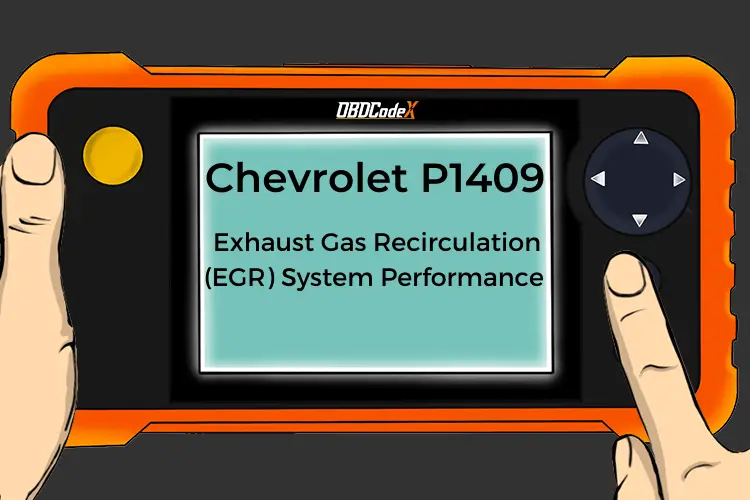P2413: Exhaust Gas Recirculation System Performance
Is your scanner showing P2413?
No worries. We'll show you what it means and how to deal with it.
P2413: Exhaust Gas Recirculation System Performance
OVERVIEWWhat Does The P2413 Code Mean?
The presence of a stored P2413 code means that the powertrain control module (PCM) has detected a malfunction in the exhaust gas recirculation (EGR) system.
The EGR system, used in ODB-II equipped vehicles, is designed to help reduce nitrogen oxide emissions in engine exhaust. It consists of an electronically controlled EGR valve that is opened via a voltage signal from the PCM. When it is opened, a portion of spent engine exhaust gases are allowed to reenter the engine’s induction system where excessive NOx vapors are burned as fuel.
There are two basic types of EGR systems used in modern automobiles and light trucks. They are linear and vacuum diaphragm. Either type is designed with multiple openings that intersect in a single chamber. One of the openings is fitted with a plunger that seals it tightly when not commanded to open. The valve is positioned so that, when the plunger is opened, exhaust can flow through the EGR chamber and enter the intake passage/s. This is usually accomplished with either an EGR exhaust tube or with an extended intake passage.
The linear EGR is opened using one or more electronically controlled solenoid/s that are controlled by the PCM. When the PCM recognizes a certain engine load, vehicle speed, engine RPM, and engine temperature (depending upon vehicle manufacturer), the EGR valve is opened to a desired degree.
The vacuum diaphragm type valve can be a bit more complex, as it uses an electronically controlled solenoid to divert intake vacuum to the EGR valve. The solenoid is typically supplied with intake vacuum on one (of two) ports. When the solenoid is commanded open by the PCM, vacuum is allowed to flow through and reach the EGR valve; opening the valve to the desired degree.
When the EGR valve is commanded open, the PCM monitors EGR system performance using several varying methods. Some manufacturers equip their vehicles with a dedicated EGR sensor. The most common type of EGR sensor is the Delta Process Feedback EGR (DPFE) sensor. When the EGR valve is opened, exhaust gases flow into the sensor via high temp silicon hoses. Other automakers use changes in manifold air pressure (MAP) and manifold air temperature (MAT) to monitor EGR performance.
When the PCM commands the EGR valve to be opened, if it does not see the desired degree of change in the EGR sensor or MAP/MAT sensor, a code P2413 will be stored and a malfunction indicator lamp may be illuminated.
What Are The Symptoms Of The P2413 Code?
This is an emissions related code and may be addressed at your convenience. Symptoms of a P2413 code may include:
- Diminished fuel efficiency
- The presence of other related EGR codes
- A stored code
- An illuminated malfunction indicator lamp
What Are The Potential Causes Of The P2413 Code?
Possible causes for this engine code include:
- A defective EGR sensor
- Faulty MAP/MAT sensor
- Bad EGR valve
- Exhaust leaks
- Cracked or collapsed vacuum lines
- Open or shorted EGR control or EGR sensor circuits
How Can You Fix The P2413 Code?
A good starting point is always to check for technical service bulletins (TSB) for your particular vehicle. Your issue may be a known issue with a known fix put out by the manufacturer and can save you time and money during diagnosis.
You will need a diagnostic scanner, a digital volt/ohmmeter (DVOM), a hand held vacuum pump (in some cases), and a vehicle service manual (or the equivalent) to diagnose a code P2413.
Step 1
I usually like to begin my diagnostic process with a visual inspection of system related wiring and connectors. Repair or replace shorted or open circuits as required.
Step 2
Connect the scanner to the vehicle diagnostic connector and retrieve all stored trouble codes and available freeze frame data. I like to write this information down because it can be a big help if this turns out to be an intermittent code. Now, clear the codes and test drive the vehicle to see if the P2413 is reset.
Keep in mind that this type of code may require multiple drive cycles to reset. In order to establish that you have rectified a low EGR performance condition, you will need to allow the PCM to go through a self-test procedure and enter OBD-II readiness mode.
If the PCM enters readiness mode without a code being reset, the system is performing as commanded. The vehicle is also prepared for federally mandated emissions testing when the PCM is in readiness mode.
If the code is reset, consult the vehicle service manual to determine with which type of EGR system your vehicle is equipped.
Step 3
Test the vacuum diaphragm EGR valve.
Connect the scanner to the diagnostic port and pull up the data stream. Narrowing the data stream to display only pertinent data will yield a faster response. Connect the hand held vacuum pump hose to the EGR vacuum port.
Start the engine and allow it to idle with the transmission in park or neutral. While observing the pertinent data on the scanner display, slowly actuate the hand held vacuum pump. The engine should stall from excessive EGR activation at idle and the appropriate sensor/s should show the expected degree of variation.
If the engine doesn’t stall with the vacuum pump pulled down, suspect that you have either a defective EGR valve or clogged EGR passages. Clogged EGR passages are more common in high mileage vehicles.
You can remove the EGR valve and start the engine. If the engine makes a loud sucking sound and stalls, the EGR valve is probably bad. If the engine shows no change without the EGR bolted on, you likely have clogged EGR passages. You can clear carbon from EGR passages relatively easily on most vehicles.
Linear EGR valves will need to be actuated using the scanner but the test for EGR passages is the same. Consult the vehicle service manual and use the DVOM to test resistance levels in the EGR valve itself. If the valve proves to be within specifications, disconnect related controllers and test system circuits for resistance and continuity.
Additional diagnostic notes:
- EGR valve failure is much less common than clogged passages or defective EGR sensors
- Systems designed to deliver EGR gases to individual cylinders can contribute to ignition misfire codes if passages become clogged
Recommended Parts
Below are some recommended auto parts to help you address the trouble code affecting your vehicle and get it running smoothly again:
>>> EGR Sensor
>>> MAT Sensor
>>> MAP Sensor
>>> EGR Valve
>>> Vacuum Line
>>> Autel Scanner MaxiCOM MK808S
>>> KAIWEETS Digital Multimeter
Note: During the purchasing process, please check carefully whether the part you want to buy fits your car!
Reference Sources
P2413 EGR System Performance, OBD-Codes.




